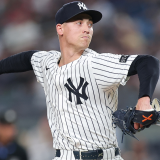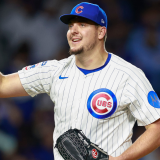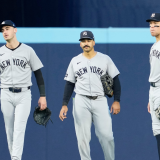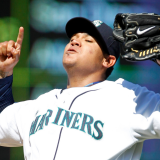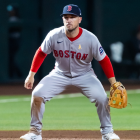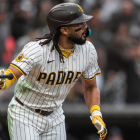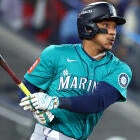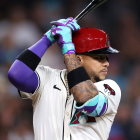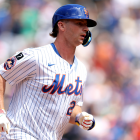What Phillies and Cubs need to pull off improbable NLDS comebacks against the Dodgers and Brewers
The Phillies and Cubs are on the brink of elimination heading into NLDS Game 3
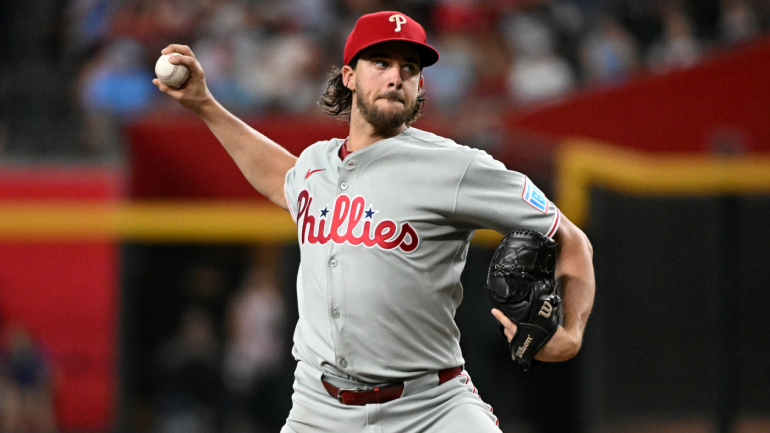
Tuesday's travel day for each National League Division Series finds both the Philadelphia Phillies and Chicago Cubs in grave peril of being swept out of the playoffs by the Los Angeles Dodgers and Milwaukee Brewers, respectively. Each club is down 2-0 in their respective best-of-five series as the Phillies head west to Dodger Stadium to face the defending champs for at least one game and the Cubs welcome the top-seeded Brewers to Wrigley for their Game 3 on Wednesday.
The reality confronting each team is that just two teams have ever come back from down 2-0 in the NLDS to win the series. The first was the Los Angeles Dodgers in 1981 (the labor stoppage led to a one-off playoff format that year), who came back to bounce the Houston Astros. Then the San Francisco Giants in 2012 pulled it off at the expense of the Cincinnati Reds. That's it. As you would expect, the Phillies and Cubs are each facing long odds.
Now comes the speculative matter of what needs to happen for the Phillies and Cubs to join that very short list of successful "down 2-0 in a best-of-five NLDS" comeback stories. Let's start first with the team facing perhaps the heaviest lift -- the Phillies, who dropped the first two games of their series at home and now must beat the Dodgers in L.A, and then let's drop in on the Upper Midwest. Here are two keys for each aspiring comebacker.
Phillies: A vintage start and more Dodgers' relievers
1. Aaron Nola must deliver
The Phillies have a deep rotation, but the loss of ace Zack Wheeler to season-ending shoulder surgery figures to be keenly felt in the must-win Game 3 on Wednesday. That's because veteran moundsman Aaron Nola will be on the bump for the Phillies in that elimination game.
Normally, this wouldn't be cause for handwringing, as he's put together a stellar career at the front side of Philly's rotation. In this, his age-32 season, however, Nola has struggled badly:
He's also allowed 18 home runs in 94 ⅓ innings this season, and that could be a problem against the NL's most powerful lineup. Nola missed significant time this season with an ankle injury, and his recovery was complicated by a rib fracture that showed up in early June. Since returning from those injuries in the middle of August, Nola has continued to struggle with run prevention, but an FIP of 4.03 over that span shows that he's been adequate at an underlying level. Manager Rob Thomson, no doubt, is hoping that Nola's final start of the regular season on Sept. 26, in which he limited the Twins to one run over eight innings, struck out nine against no walks, and took a perfect-game bid into the sixth inning, is a sign of where he's at currently. He also showed significantly improved velocity on his fastball and sinker in that outing.
To be sure, the Dodgers are not the Twins, but that most recent start by Nola is the hope to which the Phils are clinging as Wednesday looms. We know Nola, who has a career WAR of 35.3 and has on three occasions finished in the top 10 of the Cy Young vote, is more than capable of pitching like the ace the Phillies need in Game 3. Will he, though?
2. See the Dodgers' 'pen early
The Phillies have managed just six total runs through the first two games of their series against the Dodgers, and they permitted the Dodgers' starters -- Shohei Ohtani in Game 1 and Blake Snell in Game 2 -- to each work six innings. The Philly lineup did early damage against Ohtani, but they then allowed him to settle down and notch a quality start.
The Dodgers' leading weakness right now is in the bullpen. Roki Sasaki may indeed be the late-inning lockdown reliever they've been seeking for much of the current season, but even if that's the case -- it's a bit too soon and the sample a bit too small to anoint Sasaki as a relief ace -- the middle-relief and setup corps remain vulnerable and light on reliable arms. The Phillies almost made this work in their favor in Game 2, but L.A. was able to eke out the win. For a number of reasons, the Phillies' offense needs to hang numbers on L.A. starter Yoshinobu Yamamoto in Game 3, and one of those is forcing the Dodgers bullpen to do some heavy lifting. That's the only soft underbelly of the L.A. roster right now.
Cubs: Rest the bullpen and get on base
1. Make fewer calls to the 'pen
Coming off a highly bullpen-heavy triumph over the San Diego Padres in the Wild Card Series, Craig Counsell and the Cubs needed some length from their starters in the NLDS. They haven't gotten it. In Game 1, Matthew Boyd didn't even finish the first inning. In Game 2, Shota Imanaga lasted just 2 ⅔ frames. The Cubs this postseason have logged 30 ⅓ bullpen innings. Next in line are the Tigers at 18 ⅔. That's a huge margin, to state the obvious.
Counsell, obviously, has to approach Game 3 with an all-hands-on-deck mindset, and Tuesday's off day will be most welcome. Still, outside the obvious of a win in Game 3, what the Cubs need almost as badly is a deep outing by Game 3 starter Jameson Taillon, who's in the Cubs' playoff rotation only because of the injury to Cade Horton (and, looking further back, the UCL surgery undergone by Justin Steele back in April). In the deciding Game 3 of the Wild Card Series, Taillon gave the Cubs four scoreless innings, and Counsell may need even more from him in this particular Game 3. That's especially the case given that the Cubs may need to run another bullpen game if this series goes long enough. Against a deep and relentless Milwaukee offense, Taillon needs to be just about as good as he's ever been.
2. Raise the OBP
The power has been there for the Cubs, as they've homered four times in two games. In Game 1, however, they hit three of those four home runs, and all three were solo shots. More broadly, the Cubs haven't scored more than three runs in any game during these playoffs. Here's the number that explains it: .271.
That's the Cubs on-base percentage through five postseason games this year. During the regular season, the Cubs' offense ranked 10th among MLB's 30 teams with an OBP of .320. Sure, some drop-off is expected in the playoffs given the higher quality of pitching, but a 50-point decline is too much to survive in the absence of stingy run prevention.
Chicago hitters need to create traffic for when the extra-base power bubbles up again. Thus far, they haven't been doing that, broadly speaking. They must if there's going to be a Game 4.







